It looks like you're using an Ad Blocker.
Please white-list or disable AboveTopSecret.com in your ad-blocking tool.
Thank you.
Some features of ATS will be disabled while you continue to use an ad-blocker.
share:
Cities Of The South
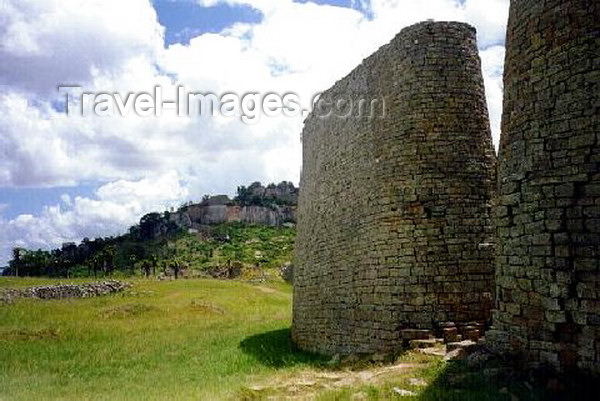
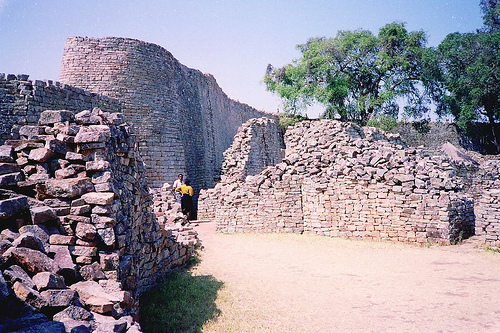
Zimbabwe center of a large trading empire ,consisting of over 300 stone towns and villages that was the southern terminus of a vast trade network that ended in China
These traded in gold and ivory to their Swahili cousins on the coast,merchants from all across their known world took goods back with the to India,Arabia,Persia,Egypt the Swahili themselves adopted ship building techniques from their trading partners the Arabs and sailed their own shipping fleets to China and India,one occasion they bought a gift to the Emperor of China that caused a sensation that the mythical creature could be real that creature was a giraffe.
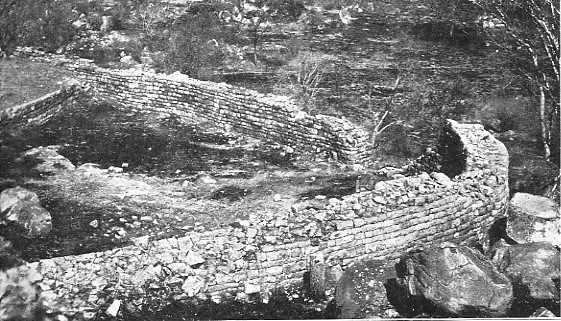
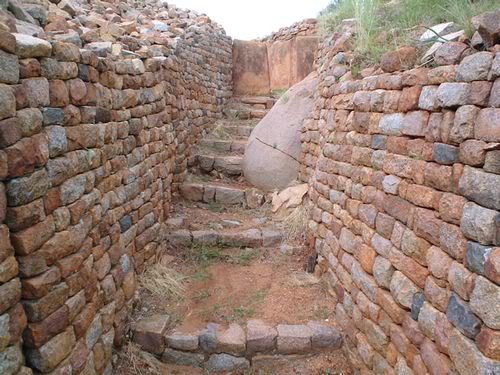
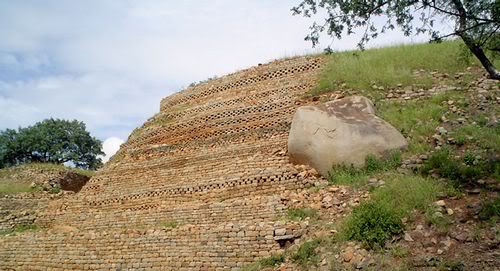
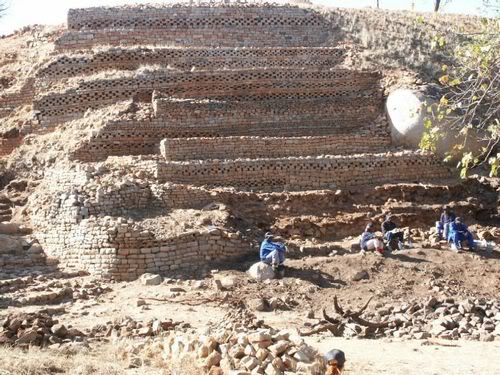

Nalatale ruins Khami ruins
Dahlo Dahlo and Tsindi ruins Zimbabwe /b]
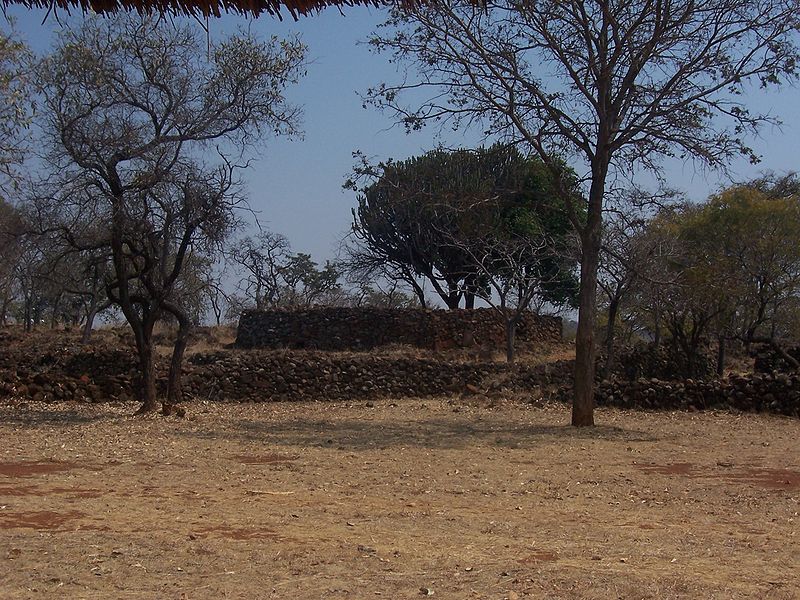

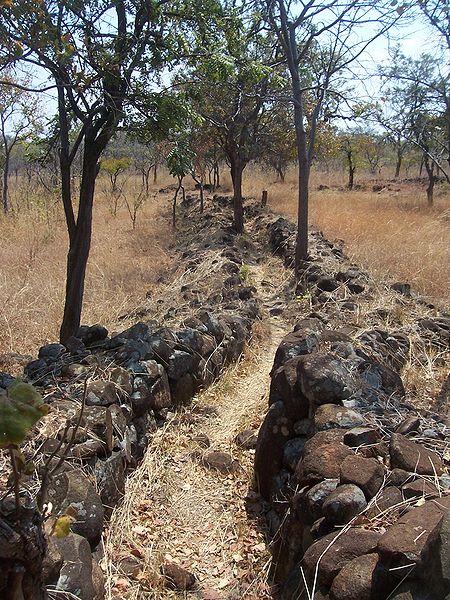
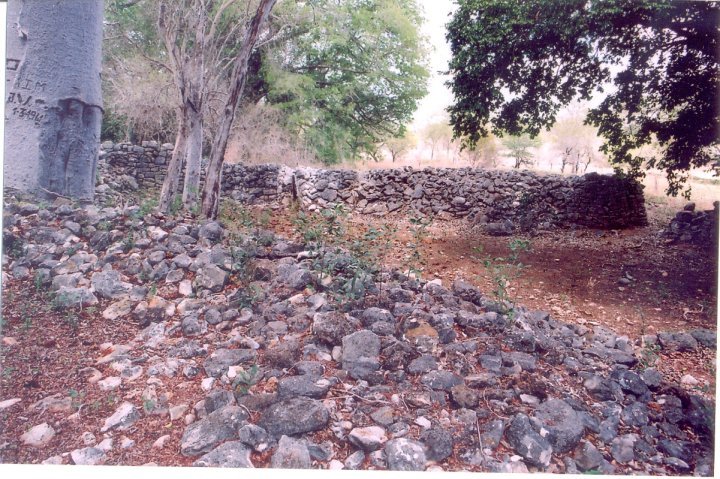
Ziwa in Mozambique part of the large Empire of Zimbabwe reaching almost to the coast


Zimbabwe center of a large trading empire ,consisting of over 300 stone towns and villages that was the southern terminus of a vast trade network that ended in China
These traded in gold and ivory to their Swahili cousins on the coast,merchants from all across their known world took goods back with the to India,Arabia,Persia,Egypt the Swahili themselves adopted ship building techniques from their trading partners the Arabs and sailed their own shipping fleets to China and India,one occasion they bought a gift to the Emperor of China that caused a sensation that the mythical creature could be real that creature was a giraffe.





Nalatale ruins Khami ruins
Dahlo Dahlo and Tsindi ruins Zimbabwe /b]




Ziwa in Mozambique part of the large Empire of Zimbabwe reaching almost to the coast
Excellent thread. There seems to be soo much about our oldest continent that most of us don't know. Thank you for this thread, i've enjoyed
reading it thus far.
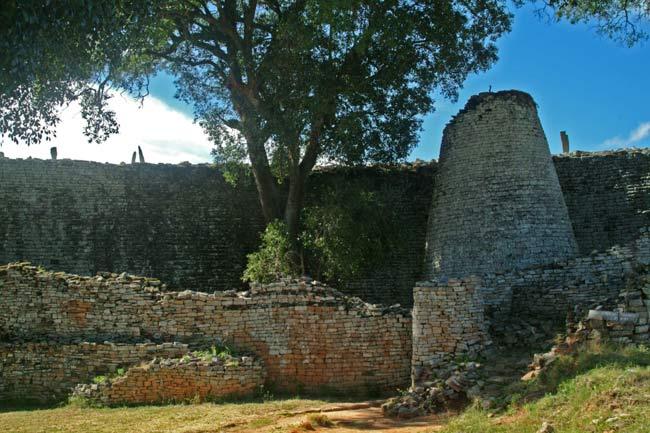
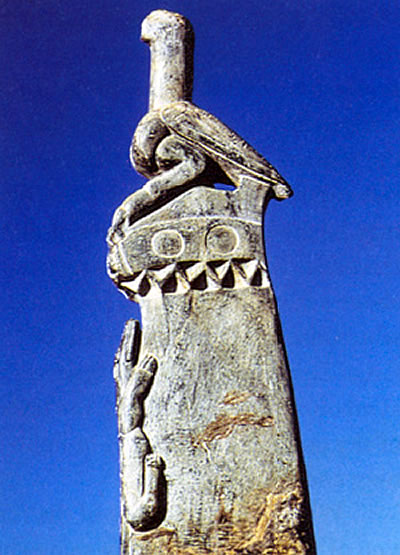
Forgot to mention that the top of the walls were mounted these soap stone birds carted off as private collections by Cecil Rhodes and C.O some most likely in British Museums, please attention to those pole like things on the wall, that's where the Birds were mounted.
reply to post by Spider879
I enjoyed those pics. My favorite work though is that of Michael Tellenger's. Being that he is from Africa and is going were a lot of mainstreamers are not and I love his daring attitude. It is like they are building gold courses etc. around this stuff and stepping over it. But is like the golden snake that has to bite them before mankind wakes up to the realities that the anunaki or something like them has to be taken seriously,
I enjoyed those pics. My favorite work though is that of Michael Tellenger's. Being that he is from Africa and is going were a lot of mainstreamers are not and I love his daring attitude. It is like they are building gold courses etc. around this stuff and stepping over it. But is like the golden snake that has to bite them before mankind wakes up to the realities that the anunaki or something like them has to be taken seriously,
reply to post by thetiler
Yeah I wish university would just do a study already,confirm or deny it either way it does no good ignoring it and really we have evidence of complex human thought in the area involving the Blombos caves

Dated at about 75kys ago the same time as Adam's Calander.
Yeah I wish university would just do a study already,confirm or deny it either way it does no good ignoring it and really we have evidence of complex human thought in the area involving the Blombos caves

Dated at about 75kys ago the same time as Adam's Calander.
Zulu Homes
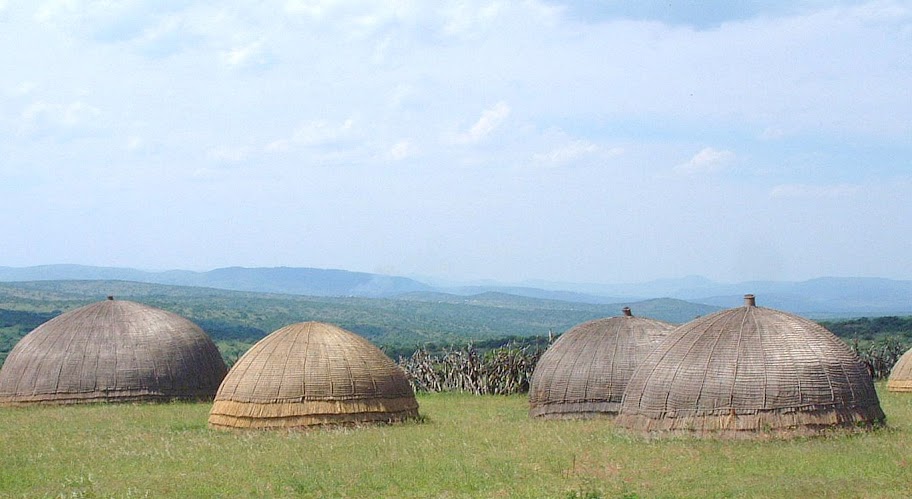
Ndebele Homes
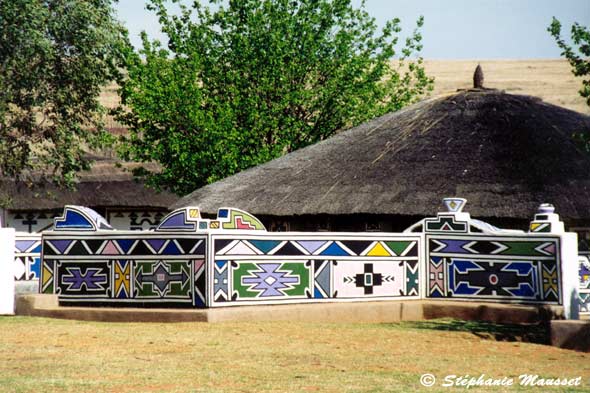
The Ndebele homes kind of remind me of some native American designs.

Ndebele Homes

The Ndebele homes kind of remind me of some native American designs.
The cities of the coast the Sawhili
Punt and Rhapta two African cities lost to us for posterity both located somewhere in East Africa..could they be one and the same? after-all they both produced Cassia/Cinnamon..although Punt was supposed to be a major exporter of frankincense and myrrh In anycase these places seems to have an extremly long trading ties to Countries near and far as far away as Indoneasia, and may have gave rise to the Swahili city states.
The east African coast has long been a centre of international trade. Starting in around 2500 BC , the ancient Egyptians evidently entered into spasmodic trade with an east African port they knew as Punt. From about 600 BC , the Phoenicians and Romans are known to have traded with an east African port called Rhapta.
The collapse of the Roman Empire signalled a temporary end to maritime trade with the east African coast, and it presumably forced the closure of any contemporary trade routes into the African interior. Ptolemy claims that a Greek explorer called Diogenes saw two snow-capped mountains 25 days upriver from Rhapta and that he was told by other traders of vast lakes further inland, which indicates that 4th-century trade routes must have penetrated the interior as far as Mounts Kenya and Kilimanjaro, and possibly also Lakes Victoria and Tanganyika.
www.geckogo.com › World › Africa
The Swahili
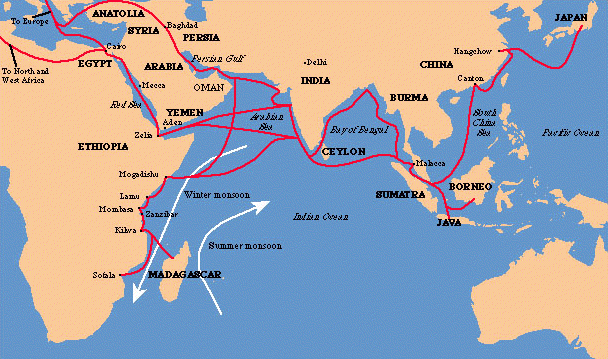
Kilwa History
The earliest substantial occupation at Kilwa Kisiwani dates to AD 800, and the city became a major trade center from the 1100s to the early 1500s. The site was important during the Shirazi dynasty of the 11th and 12th centuries AD, and under the rule of Ali al-Hasan, a Great Mosque was built, and trade connections to southern Africa and the near and far east were established. Kilwa Kisiwani was one of the principal ports of trade on the Indian Ocean, trading gold, ivory, iron and coconuts from southern Africa, including the Mwene Mutabe south of the Zambezi River, for cloth and jewelry from India, and porcelain from China. The first gold coins struck south of the Sahara after the decline at Aksum were minted at Kilwa Kisiwani, presumably for facilitating international trade. One of them was found at the Mwene Mutabe site of Great Zimbabwe.
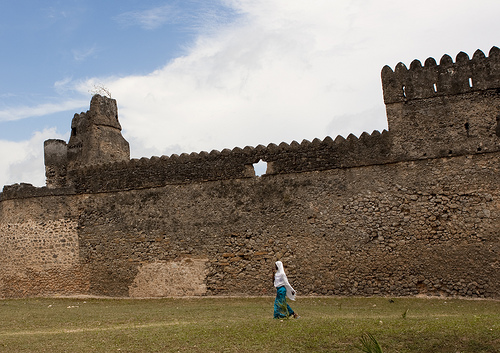
Gerezani fort in Kilwa Kisiwani,Tanzania

Gedi ruins: The ruins are the remains of a town located in Gede, a village near the coastal town of Malindi in Kenya. It is suggested that between the 13th and 14th to 17th centuries, Gedi was a thriving community along coastal Kenya. Although no written record exists of this town, excavations made between 1948 and 1958 have revealed that the inhabitants of Gedi traded with people from all over the world. “The artifacts that were found in the ruins, such as Chinese porcelain and Venetian glass, indicate that Gedi was a wealthy city that traded with Portugal, Italy, China, India and the Arab world” (Mombasa Kenya coast: Gedi ruins, www.articlebase.com). The ruins have a mosque, a palace, and large stone houses. The city’s streets were laid out at right angles and had drainage gutters. It is assumed that the village was abandoned in early 16th century. The ruins were declared a Historical monument in 1948.
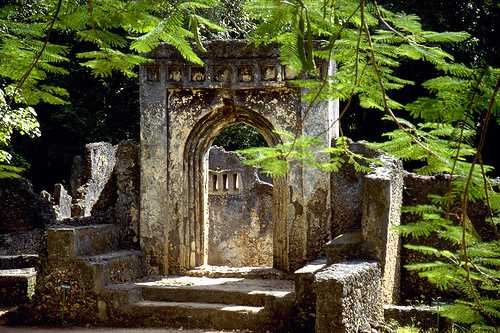

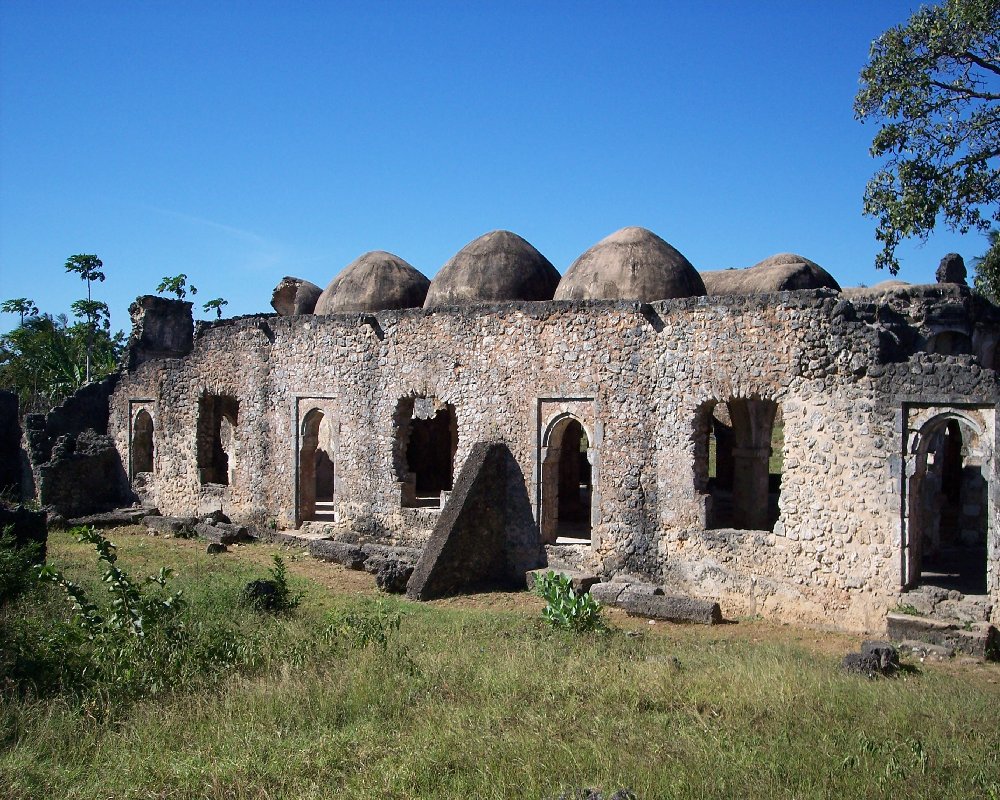
14th Century Great Mosque at Kilwa Kisiwani, Tanzania

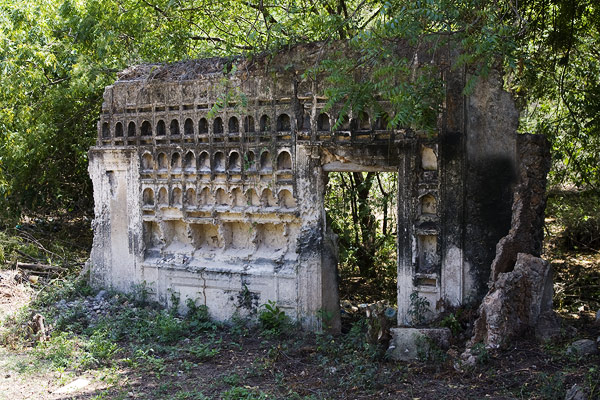
Lamu
Note pls pay attention to what look like holes in the wall,that feature was decorated with Chinese porcelain

An African ambassador to Ming Dyn.China
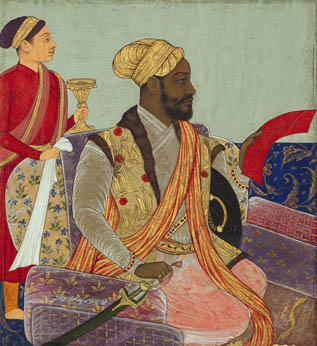
In 1490, an African guard, Sidi Badr, seized power in Bengal and ruled for three years before being murdered. Five thousand of the 30,000 men in his army were Ethiopians. After Sidi Badr’s assassination, high-level Africans were driven out and migrated to Gujarat and the Deccan. In the Deccan sultanate of Bijapur, Africans formerly enslaved—they were called the “Abyssinian party”—took control. The African regent Dilawar Khan exercised power from 1580 and was succeeded by Ikhlas Khan. The Abyssinian party dominated the Bijapur Sultanate and conquered new territories until the Mughal invasion in 1680 and was succeeded by Ikhlas Khan. The Abyssinian party dominated the Bijapur Sultanate and conquered new territories until the Mughal invasion in 1686.
exhibitions.nypl.org...
Read more: egyptsearchreloaded.proboards.com...
Punt and Rhapta two African cities lost to us for posterity both located somewhere in East Africa..could they be one and the same? after-all they both produced Cassia/Cinnamon..although Punt was supposed to be a major exporter of frankincense and myrrh In anycase these places seems to have an extremly long trading ties to Countries near and far as far away as Indoneasia, and may have gave rise to the Swahili city states.
The east African coast has long been a centre of international trade. Starting in around 2500 BC , the ancient Egyptians evidently entered into spasmodic trade with an east African port they knew as Punt. From about 600 BC , the Phoenicians and Romans are known to have traded with an east African port called Rhapta.
The collapse of the Roman Empire signalled a temporary end to maritime trade with the east African coast, and it presumably forced the closure of any contemporary trade routes into the African interior. Ptolemy claims that a Greek explorer called Diogenes saw two snow-capped mountains 25 days upriver from Rhapta and that he was told by other traders of vast lakes further inland, which indicates that 4th-century trade routes must have penetrated the interior as far as Mounts Kenya and Kilimanjaro, and possibly also Lakes Victoria and Tanganyika.
www.geckogo.com › World › Africa
The Swahili

Kilwa History
The earliest substantial occupation at Kilwa Kisiwani dates to AD 800, and the city became a major trade center from the 1100s to the early 1500s. The site was important during the Shirazi dynasty of the 11th and 12th centuries AD, and under the rule of Ali al-Hasan, a Great Mosque was built, and trade connections to southern Africa and the near and far east were established. Kilwa Kisiwani was one of the principal ports of trade on the Indian Ocean, trading gold, ivory, iron and coconuts from southern Africa, including the Mwene Mutabe south of the Zambezi River, for cloth and jewelry from India, and porcelain from China. The first gold coins struck south of the Sahara after the decline at Aksum were minted at Kilwa Kisiwani, presumably for facilitating international trade. One of them was found at the Mwene Mutabe site of Great Zimbabwe.

Gerezani fort in Kilwa Kisiwani,Tanzania

Gedi ruins: The ruins are the remains of a town located in Gede, a village near the coastal town of Malindi in Kenya. It is suggested that between the 13th and 14th to 17th centuries, Gedi was a thriving community along coastal Kenya. Although no written record exists of this town, excavations made between 1948 and 1958 have revealed that the inhabitants of Gedi traded with people from all over the world. “The artifacts that were found in the ruins, such as Chinese porcelain and Venetian glass, indicate that Gedi was a wealthy city that traded with Portugal, Italy, China, India and the Arab world” (Mombasa Kenya coast: Gedi ruins, www.articlebase.com). The ruins have a mosque, a palace, and large stone houses. The city’s streets were laid out at right angles and had drainage gutters. It is assumed that the village was abandoned in early 16th century. The ruins were declared a Historical monument in 1948.



14th Century Great Mosque at Kilwa Kisiwani, Tanzania


Lamu
Note pls pay attention to what look like holes in the wall,that feature was decorated with Chinese porcelain

An African ambassador to Ming Dyn.China

In 1490, an African guard, Sidi Badr, seized power in Bengal and ruled for three years before being murdered. Five thousand of the 30,000 men in his army were Ethiopians. After Sidi Badr’s assassination, high-level Africans were driven out and migrated to Gujarat and the Deccan. In the Deccan sultanate of Bijapur, Africans formerly enslaved—they were called the “Abyssinian party”—took control. The African regent Dilawar Khan exercised power from 1580 and was succeeded by Ikhlas Khan. The Abyssinian party dominated the Bijapur Sultanate and conquered new territories until the Mughal invasion in 1680 and was succeeded by Ikhlas Khan. The Abyssinian party dominated the Bijapur Sultanate and conquered new territories until the Mughal invasion in 1686.
exhibitions.nypl.org...
Read more: egyptsearchreloaded.proboards.com...
Thank you for sharing this information my friend, we would not have the doubts we have about ourselves and our origins if only "serious scholars"
would take the time and resources to develop profound research in Africa, the root of our origins and the answers to our very future are waiting for
us in its vast landscapes and secret valleys.
How many vestiges are hidden in plain sight, how many have been ignored by western "authorities"
thanks for your time bringing these and many more questions to light
cheers!
How many vestiges are hidden in plain sight, how many have been ignored by western "authorities"
thanks for your time bringing these and many more questions to light
cheers!
Thanks for the information!
There is a conspiracy which is beginning to erode which tried to force Afrika to appear as uncivilized and savage as possible.
Many people (probably some at this site) will fight tooth and nail to invalidate information pointing toward Afrika being civilized before Europe was on the map.
Indeed there is a wealth of history that was destroyed or hidden from public knowledge in support of this orchestrated conspiracy.
There is a conspiracy which is beginning to erode which tried to force Afrika to appear as uncivilized and savage as possible.
Many people (probably some at this site) will fight tooth and nail to invalidate information pointing toward Afrika being civilized before Europe was on the map.
Indeed there is a wealth of history that was destroyed or hidden from public knowledge in support of this orchestrated conspiracy.
Originally posted by TheOneEyedProphet
Thank you for sharing this information my friend, we would not have the doubts we have about ourselves and our origins if only "serious scholars" would take the time and resources to develop profound research in Africa, the root of our origins and the answers to our very future are waiting for us in its vast landscapes and secret valleys.
How many vestiges are hidden in plain sight, how many have been ignored by western "authorities"
thanks for your time bringing these and many more questions to light
cheers!
As a black child in American schools I was taught that we were spear chucking, savages running around naked with bones in our nose. I went to school in the 80's. I wonder if American education is giving more credit to Afrikan civilization now?
reply to post by DZAG Wright
I also went to school in the 80ts and we happend to have a very fantastic history teacher who was of Italian heritage she would arrange trips to the Blkyn Museum and the Met,On one occasion at the Met in the Egyptian gallery a father with his daughter was checking out some statuettes in a glass casting of a typical work day in Egypt of ordinary folks baker,butcher boatmen and the like when the little girl in typical kid's brutally honest fashion said excitedly daddy they are Black!! the father seemed flushed began to set the kid straight,no hon that's just the slaves,on over hearing the exchange Mrs Carmine gather the class around the display and began to set daddy the little girl and anyone else in the rm of who the Egyptians were at the end of her impromptu lecture almost everyone in the rm applauded except for daddy who walked embarrassed.
As a black child in American schools I was taught that we were spear chucking, savages running around naked with bones in our nose. I went to school in the 80's. I wonder if American education is giving more credit to Afrikan civilization now?
I also went to school in the 80ts and we happend to have a very fantastic history teacher who was of Italian heritage she would arrange trips to the Blkyn Museum and the Met,On one occasion at the Met in the Egyptian gallery a father with his daughter was checking out some statuettes in a glass casting of a typical work day in Egypt of ordinary folks baker,butcher boatmen and the like when the little girl in typical kid's brutally honest fashion said excitedly daddy they are Black!! the father seemed flushed began to set the kid straight,no hon that's just the slaves,on over hearing the exchange Mrs Carmine gather the class around the display and began to set daddy the little girl and anyone else in the rm of who the Egyptians were at the end of her impromptu lecture almost everyone in the rm applauded except for daddy who walked embarrassed.
Great thread, I knew about the Kush pyramids, but there is so much more I didn't know. It saddens me when such forms of artistry and education are
destroyed by others (invaders) as was mentioned in some of the pictures posted. Imagine how many of our questions regarding the amazing ruins of
Mexico, Central and South America would be answered had the Catholic priests from Spain not burned and obliterated as much as they could during the
invasion and conversion. If I remember correctly of the multitudes of books the Mayans created all but 4 of them were burned by the church.
reply to post by ManFromEurope
I absolutely loved the article regarding the 15 year old. He is right, Removing one child from an unhealthy environment by adopting him, might help him but it does nothing to help the circumstances and conditions that are at the root of that unhealthy environment. Yeah it's one saved but so many left behind. I know there are charities in which you can "virtually adopt" a child by instead donating enough to provide nourishment, schooling and medical treatment for the child you choose, you are also encouraged to correspond with that child so you get a chance to know and feel the difference you are making. Through Save the Children you can sponsor one child for $28 a month. When one considers how much money is spent adopting a child, paying immigration fee's to bring this child to a new country, and then raising that child throughout their lives, imagine how many children could be helped with what it costs to adopt just one.
The problems won't go away by removing one child from the environment at a time. The problems will over time improve greatly if the children are provided with appropriate nourishment, a solid education and effective, efficient and affordable healthcare. The problems won't go away over night, but given the tools to improve their lives and the knowledge of what is needed to improve the lives of their families, starting with the youth of this generation and building on that for each following generation, that darkness they see now at the end of the tunnel, begins to glow with a dim light that will only become brighter.
There's a lot to be said about the old saying "Give a man a fish and he will be full for a day, teach a man to fish and he need never go hungry again"
reply to post by ManFromEurope
I absolutely loved the article regarding the 15 year old. He is right, Removing one child from an unhealthy environment by adopting him, might help him but it does nothing to help the circumstances and conditions that are at the root of that unhealthy environment. Yeah it's one saved but so many left behind. I know there are charities in which you can "virtually adopt" a child by instead donating enough to provide nourishment, schooling and medical treatment for the child you choose, you are also encouraged to correspond with that child so you get a chance to know and feel the difference you are making. Through Save the Children you can sponsor one child for $28 a month. When one considers how much money is spent adopting a child, paying immigration fee's to bring this child to a new country, and then raising that child throughout their lives, imagine how many children could be helped with what it costs to adopt just one.
The problems won't go away by removing one child from the environment at a time. The problems will over time improve greatly if the children are provided with appropriate nourishment, a solid education and effective, efficient and affordable healthcare. The problems won't go away over night, but given the tools to improve their lives and the knowledge of what is needed to improve the lives of their families, starting with the youth of this generation and building on that for each following generation, that darkness they see now at the end of the tunnel, begins to glow with a dim light that will only become brighter.
There's a lot to be said about the old saying "Give a man a fish and he will be full for a day, teach a man to fish and he need never go hungry again"
Up the coast from the Sawhili city states we arrive at mighty mysterious Axum.
The Kingdom of Aksum or Axum, also known as the Aksumite Empire, was an important trading nation in the area which is now Eritrea and northern Ethiopia, existing from approximately 100–940 AD. It grew from the proto-Aksumite Iron Age period ca. 4th century BC to achieve prominence by the 1st century AD, and was a major player in the commerce between the Roman Empire and Ancient India. The Aksumite rulers facilitated trade by minting their own currency, the state established its hegemony over the declining Kingdom of Kush and regularly entered the politics of the kingdoms on the Arabian peninsula, eventually extending its rule over the region with the conquest of the Himyarite Kingdom.
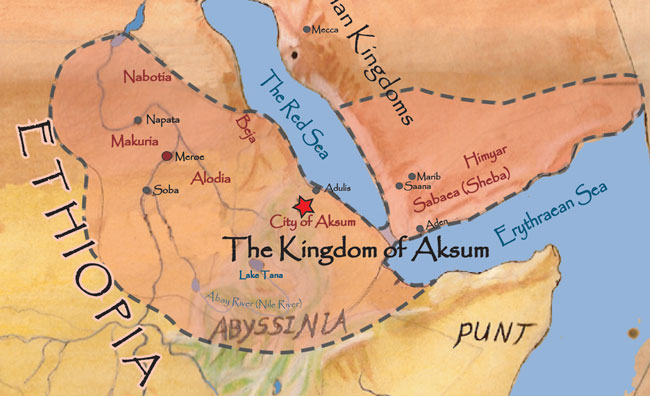

Zion said to be the home of the Ark Of the Covenent
Under Ezana (fl. 320–360), Aksum became the first major empire to convert to Christianity, and was named by Mani (216–276) as one of the four great powers of his time along with Persia, Rome, and China. In the 7th century the Muslims, who originated in Mecca, sought refuge from Quraysh persecution by travelling to Aksum (Abyssinia), a journey famous in Islamic history as the First Hijra. Aksum's ancient capital, also called Aksum, is in northern Ethiopia. The Kingdom used the name "Ethiopia" as early as the 4th century. It is also the alleged resting place of the Ark of the Covenant and the purported home of the Queen of Sheba.
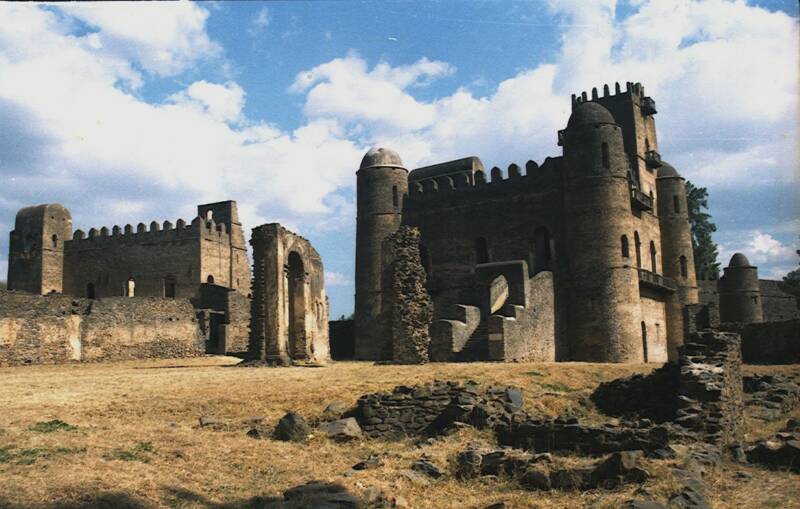

Gondar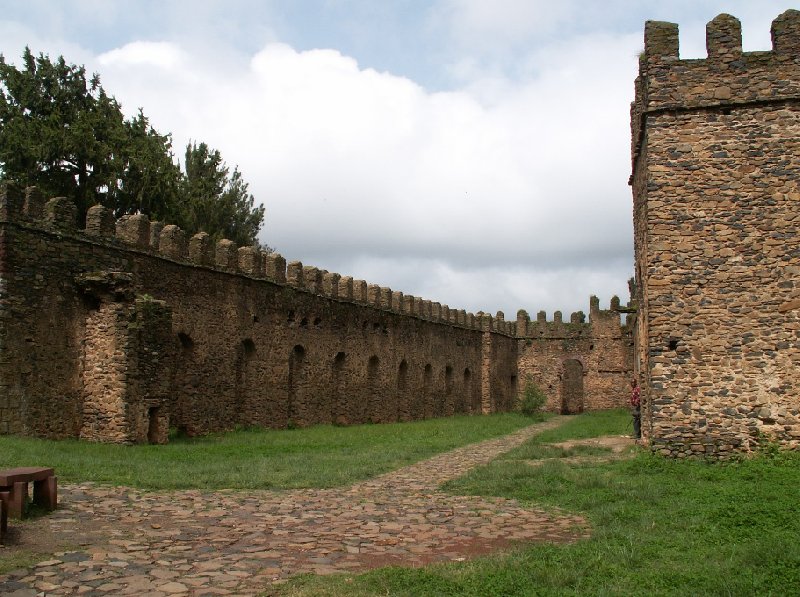


Axumite obelisk the one on the ground is said to have been the largest free standing structure in the ancient world
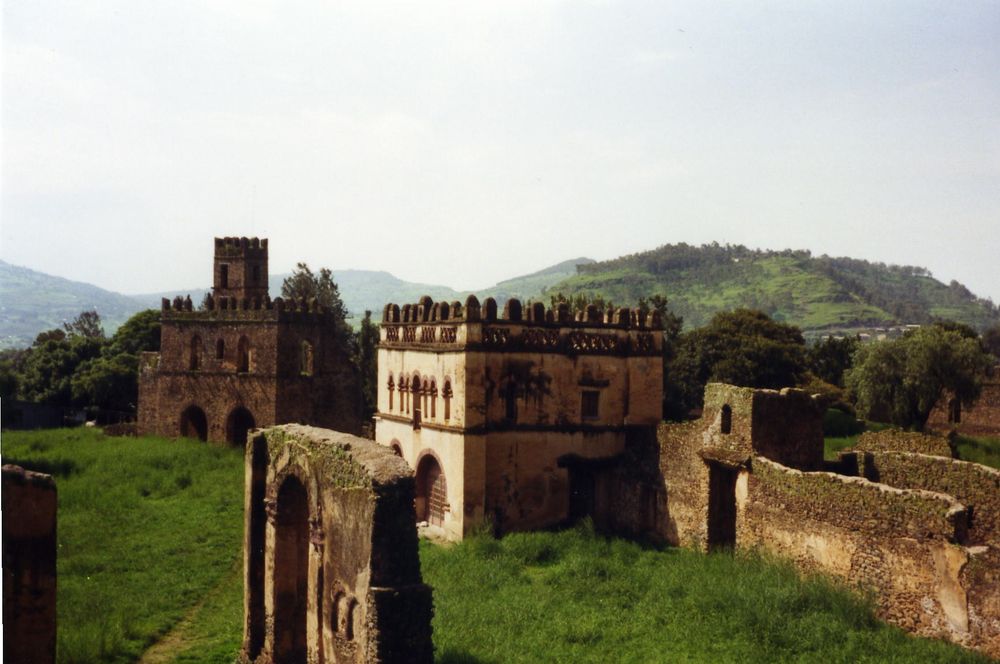
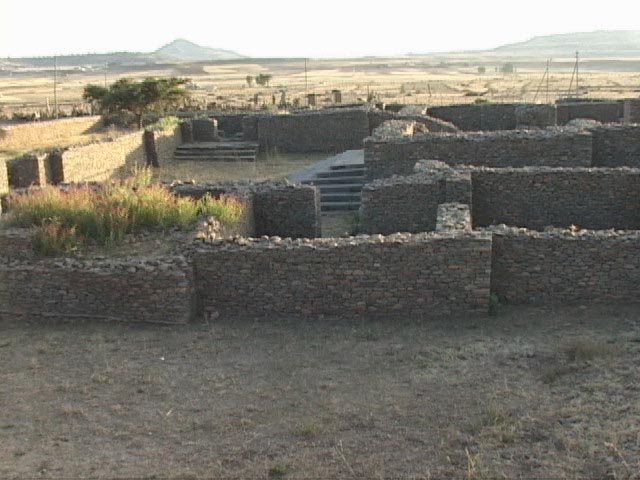
Queen Mekada's castle??

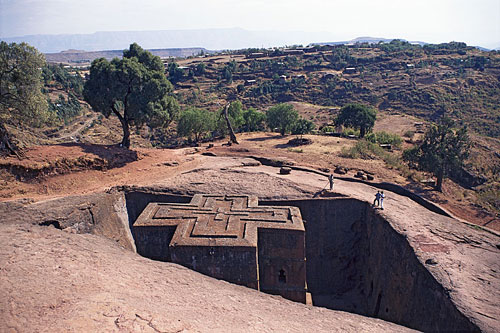
Rock cut temples of Lilabela
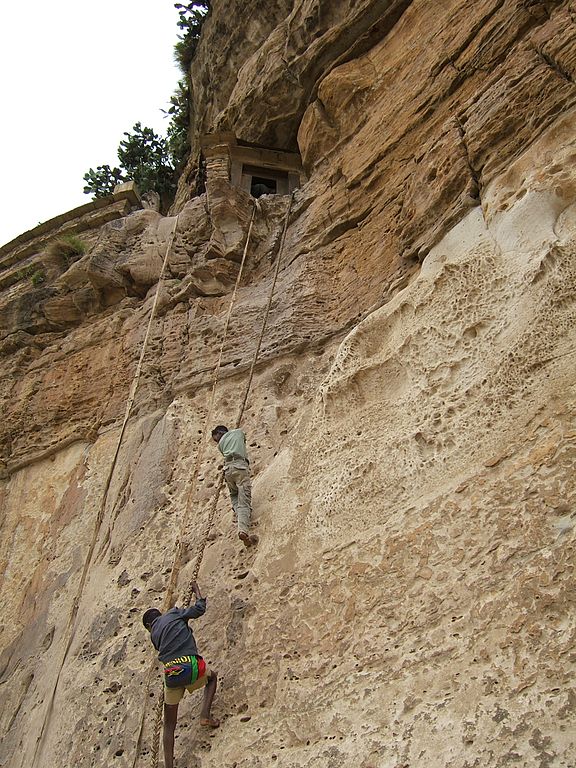
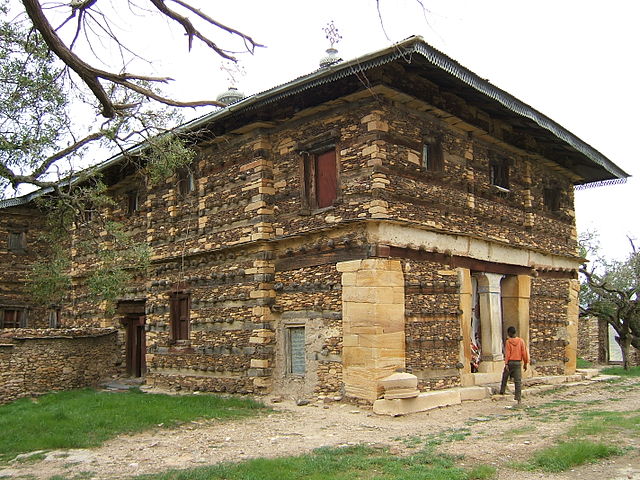
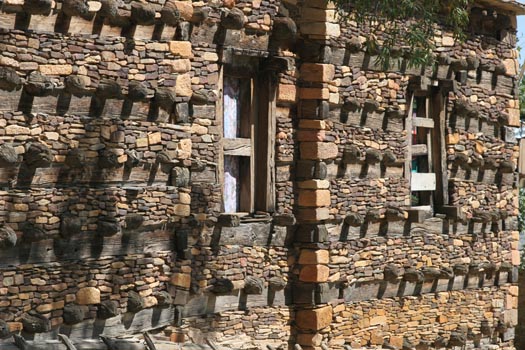
Debre Damo Monestary
Debre Damo is the name of a flat-topped mountain, or amba, and a 6th century monastery in northern Ethiopia. The mountain is a steeply rising plateau of trapezoidal shape, about 1000 by 400 meters in dimension. With a latitude and longitude of 14°22′21″N 39°17′24″ECoordinates: 14°22′21″N 39°17′24″E, it sits at an elevation of 2216 meters above sea level. It is located west of Adigrat in the Mehakelegnaw Zone of the Tigray Region. The monastery, accessible only by rope up a sheer cliff, is known for its collection of manuscripts and for having the earliest existing church building in Ethiopia still in its original style. Tradition claims the monastery was founded in the sixth century by Abuna Aregawi.


Axumite Tomb
The Kingdom of Aksum or Axum, also known as the Aksumite Empire, was an important trading nation in the area which is now Eritrea and northern Ethiopia, existing from approximately 100–940 AD. It grew from the proto-Aksumite Iron Age period ca. 4th century BC to achieve prominence by the 1st century AD, and was a major player in the commerce between the Roman Empire and Ancient India. The Aksumite rulers facilitated trade by minting their own currency, the state established its hegemony over the declining Kingdom of Kush and regularly entered the politics of the kingdoms on the Arabian peninsula, eventually extending its rule over the region with the conquest of the Himyarite Kingdom.


Zion said to be the home of the Ark Of the Covenent
Under Ezana (fl. 320–360), Aksum became the first major empire to convert to Christianity, and was named by Mani (216–276) as one of the four great powers of his time along with Persia, Rome, and China. In the 7th century the Muslims, who originated in Mecca, sought refuge from Quraysh persecution by travelling to Aksum (Abyssinia), a journey famous in Islamic history as the First Hijra. Aksum's ancient capital, also called Aksum, is in northern Ethiopia. The Kingdom used the name "Ethiopia" as early as the 4th century. It is also the alleged resting place of the Ark of the Covenant and the purported home of the Queen of Sheba.


Gondar



Axumite obelisk the one on the ground is said to have been the largest free standing structure in the ancient world


Queen Mekada's castle??


Rock cut temples of Lilabela



Debre Damo Monestary
Debre Damo is the name of a flat-topped mountain, or amba, and a 6th century monastery in northern Ethiopia. The mountain is a steeply rising plateau of trapezoidal shape, about 1000 by 400 meters in dimension. With a latitude and longitude of 14°22′21″N 39°17′24″ECoordinates: 14°22′21″N 39°17′24″E, it sits at an elevation of 2216 meters above sea level. It is located west of Adigrat in the Mehakelegnaw Zone of the Tigray Region. The monastery, accessible only by rope up a sheer cliff, is known for its collection of manuscripts and for having the earliest existing church building in Ethiopia still in its original style. Tradition claims the monastery was founded in the sixth century by Abuna Aregawi.


Axumite Tomb
Originally posted by DZAG Wright
As a black child in American schools I was taught that we were spear chucking, savages running around naked with bones in our nose. I went to school in the 80's. I wonder if American education is giving more credit to Afrikan civilization now?
I would just like to say that I am sorry that your learning experience was so bleak that's horrible.
I was schooled in America from 1966-1978 (discounting college) and I recall learning about the American history regarding the slave trade, and the struggle for equality, but I don't recall learning about any other stereotypes such as what you were taught. In fact that is one thing I've often found a bit ironic.
Growing up we were given the impression that schools in large cities were more integrated and less prone to racism than small schools, Additionally I know either between school or the news that I was presented with the idea that people from the south were more likely to be prejudiced than in the north. These stereotypes are so incredibly polar opposite of my experiences growing up, that it boggles my mind.
I grew up in a town of 250 people, my 8th grade class had 12 people in it, the next year at least 3 other small schools were consolidated into 1 district. And my senior graduating class had less than 100 students. Racial distribution during that time amongst the consolidated district were Caucasian and Latin American
I do remember the television coverage of the race riots in the 60s and although I was quite young at the time (born 1960) I remember thinking that this shouldn't be happening, it shouldn't have to happen, people are people and should be treated equally, it made me angry that people were so biased that they would fight against people of another color who just wanted to be able to live their lives, work, be happy and so forth.
The first time I saw a black person in person as opposed to on TV was I around 9 or 10 years old at a small airport, and the Jackson 5 including Michael were sitting in the lounge area, it was a WOW moment in time! The next time would be during the summer of my Sophomore year of HS, I was working under a special program for the school and at the end of the summer myself and my co-workers were joined by a group from a much larger city school for a picnic, myself and my 2 other co-workers were the only white people on the bus..I'll admit we were nervous at first, then the bus driver turned on the radio and we all ended up jamming out to "Play that funky music white boy" after that we were just all together.
I do recall a brief time in which I turned green with envy towards black people, but it really wasn't anyone's fault it was just a drive to ensure education also was equal nothing wrong with that. But, I wanted to go to college, and the only way I could do so would have been on a full scholarship, my family was on the lower middle class side of things and couldn't afford it, back then the availability of student loans was pretty much zip, and although the majority of my school records were exemplary I did fail 1 class (for lack of participation...I didn't talk enough) and that blew any chance of a scholarship. A few years prior to that the "United Negro College Fund" aired commercials stating "A mind is a terrible thing to waste" and I agreed with the idea, but then when I was faced with the fact that if I wanted college my only choice would be to work at it piecemeal, working full time and taking a class here there when I could afford it. AND I became Envious, knowing that to be eligible for help from the United Negro College Fund at that time, one was required to be black, and every time I heard that commercial, in my mind I retorted back, but it's OK to waste my mind because I'm poor and white?? Where's that right! But I got over it
Now my southern reference, my father was born and raised in Arkansas and we vacationed there every year, so based on stereotypes one would expect to find racism in my family, but they would be wrong. When I was 12 my father had heart surgery, it was a very new procedure at the time so he had to have it done at the nearest major city. He was placed in a room with one other post surgical patient. As he woke from the surgery he heard an alarm coming from the bed next to him, he knew the guy could be dying, but no one was coming to help, so with every ounce of strength he had he pulled himself up and stumbled to the door and yelled for help, his actions saved the man's life. They went on to be great friends, my father even tried to convince him to move his family to our nice little town and out of the big city. but the man thoughtfully declined, he had no doubts regarding my father and family's acceptance of him and his, but he didn't feel he and his family were prepared to face the possible issues of being the first black family in our town. I felt sad about that.
I wish everyone were as lucky as I was, kinda like this:
reply to post by Pixiefyre
I have traveled all over the globe met all kinds of people as individuals some can be nasty and others fulled with generosity,on my ship there were people I liked having to stand watches with and others well???but it had nothing to do with their back ground I came out of Great Lakes Boot camp with a dude from Montana when we arrived on board ship everyone hated us because we were "boot camps" ie Newbies who couldn't do their jobs right or even find our way around the ship,so we hang together,me a black kid from NYC and he a white farm boy,we got in and out of trouble together learned from each other, I thought him how to dress right and get rid of that ten gallon hat and he taught me the disgusting habit of shewing tobacco..
I have traveled all over the globe met all kinds of people as individuals some can be nasty and others fulled with generosity,on my ship there were people I liked having to stand watches with and others well???but it had nothing to do with their back ground I came out of Great Lakes Boot camp with a dude from Montana when we arrived on board ship everyone hated us because we were "boot camps" ie Newbies who couldn't do their jobs right or even find our way around the ship,so we hang together,me a black kid from NYC and he a white farm boy,we got in and out of trouble together learned from each other, I thought him how to dress right and get rid of that ten gallon hat and he taught me the disgusting habit of shewing tobacco..
reply to post by Spider879
Great thread.
I always wondered if there were any civilizations in central Africa or along other rivers besides the Nile in North Africa? I mean if could happen there why not other locations?
Great thread.
I always wondered if there were any civilizations in central Africa or along other rivers besides the Nile in North Africa? I mean if could happen there why not other locations?
reply to post by Spider879
That's basically my take on people, there are some you'll like, some you won't, some will be good, some not so good, those issues are about individuals, but grouping an entire race,culture, background under some stereotypical umbrella not only harms them, but it also harms the one doing so, as those who do so miss out on the opportunity of meeting and getting to know some incredibly great people and the enrichment that knowing those people bring.
Back on topic here, I had forgotten when I first started reading this thread about the Rock cut temples of Lilabela, those are absolutely amazing. And ever since I first heard about the possibility of the Ark of the Covenant being sheltered and protected in Axum Ethiopia I've read much about the area and have seen some of the other relics that they allow the public to see there and I find it awfully convincing, especially due to the lives and conditions that the one entrusted to protect and appropriately worship the Ark accepts for the duration of his life. The fact that the Leader of the Ethiopian Orthodox Church discussed having to move it temporarily due to a leaking ceiling in the chapel where it is housed and the possibility that it might be publicly viewable during the moving and repairs, and then later announced that it would not be publicly displayed all transpired while he was in Rome visiting the Vatican and the Pope lends a bit of credence to the story.
That's basically my take on people, there are some you'll like, some you won't, some will be good, some not so good, those issues are about individuals, but grouping an entire race,culture, background under some stereotypical umbrella not only harms them, but it also harms the one doing so, as those who do so miss out on the opportunity of meeting and getting to know some incredibly great people and the enrichment that knowing those people bring.
Back on topic here, I had forgotten when I first started reading this thread about the Rock cut temples of Lilabela, those are absolutely amazing. And ever since I first heard about the possibility of the Ark of the Covenant being sheltered and protected in Axum Ethiopia I've read much about the area and have seen some of the other relics that they allow the public to see there and I find it awfully convincing, especially due to the lives and conditions that the one entrusted to protect and appropriately worship the Ark accepts for the duration of his life. The fact that the Leader of the Ethiopian Orthodox Church discussed having to move it temporarily due to a leaking ceiling in the chapel where it is housed and the possibility that it might be publicly viewable during the moving and repairs, and then later announced that it would not be publicly displayed all transpired while he was in Rome visiting the Vatican and the Pope lends a bit of credence to the story.
reply to post by Spider879
Not sure man. I've seen similar designs. I rather like the four way connected house, but idk.
I think the best African original architecture you're going to find is Egyptian architecture under the Nubian and Ethiopian kings.
Not sure man. I've seen similar designs. I rather like the four way connected house, but idk.
I think the best African original architecture you're going to find is Egyptian architecture under the Nubian and Ethiopian kings.
Originally posted by Gorman91
reply to post by Spider879
Not sure man. I've seen similar designs. I rather like the four way connected house, but idk.
I think the best African original architecture you're going to find is Egyptian architecture under the Nubian and Ethiopian kings.
Because somethings are similar does not mean they are not original example the Anazai and Dogan cliff dwelling but in regards to the Ashanti architecture they made use of the varanda which is odd given the anount of rain fall in the area and the fact that they only recently moved (comparatively speaking) into the forest zone from the savannah ,did their ancestors picked-up some ideas from Roman controlled coastal North Africa while trading gold,it is possible,it is just as possible it was an independant feature anything is possible btw the Roman vault "may" have been based off the Nubian vault a feature found earlier in some Nubian architecture.
Rivals of the Ashanti and Yoruba stood mighty Benin home of a corp of Amazon warrioresses, shock troops and the Kings personal body guards, up on
their coming and going to and from the palace ordinary folks are required to fall upon their bellies so as not to look at them or be instantly
beheaded,and while there is much to admire about them but this state remained actively engaged in the Slave trade on a level unequalled to other
states even having their own trade officials on the other side of the Atlantic in Brazil to make sure business ran smoothly and the nobles back home
maximized their profits.
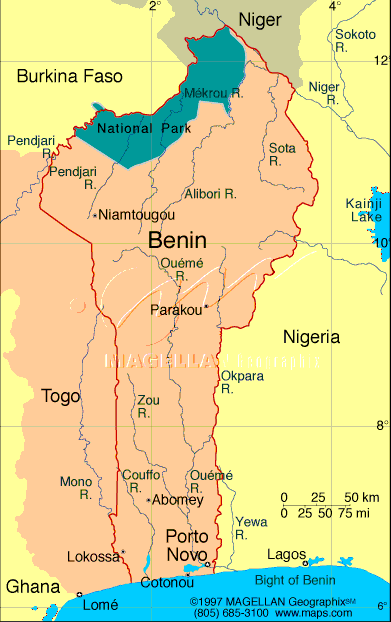
The Benin Empire (1440–1897) was a pre-colonial African state in what is now modern Nigeria. It should not be confused with the modern-day country called Benin, formerly called Dahomey.
The Ogiso Period
Ogiso ("Rulers of the Sky"), who may have numbered as many as thirty-one kings, ruling the kingdom of Benin between 900 - 1170 AD, which is the earliest period so far accounted for in Benin history (Plankensteine 2007).
The first ruler, according to Benin traditions, was Igodo, a prominent elder in his community (Odionwere) who exercised authority over all other elders (Edionwere). Igodo is said to have ruled all the various small communities which collectively formed the kingdom known as 'Igodomigodo', meaning 'land of Igodo' or 'town of towns'. The most prominent among the known Ogiso rulers are Igodo, Ere, Orire, Oriagba and Owodo. The kingdom began as a union of juxtaposed clusters of independent communities, each surrounded by a moat (Egharevba 1968).
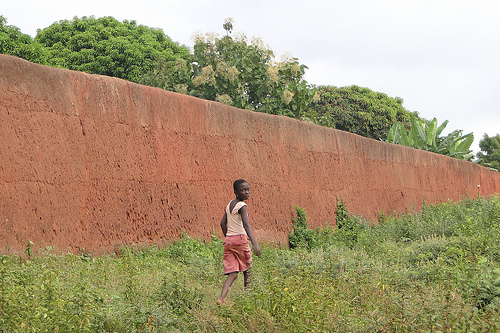
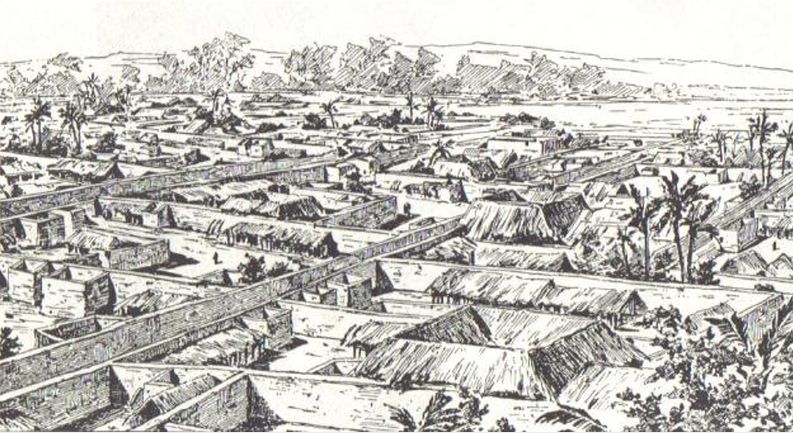
Note the grid iron streets
Fortification of Benin City
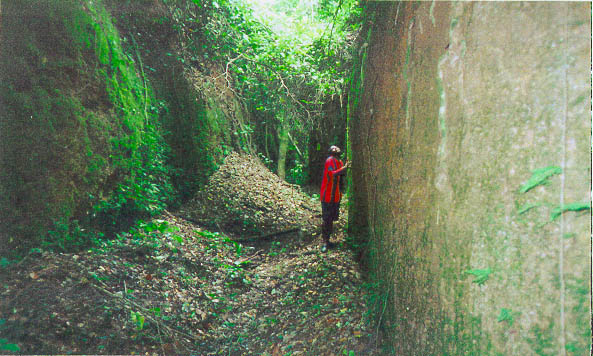
The defensive fortification of Benin City, the capital, consisted of ramparts and moats, call iya, enclosing a 4000 square kilometer (2485.5 miles) of community lands. In total, the Benin wall system encompasses over 10,000 kilometres (6213.7 miles) of earth boundaries. Patrick Darling, an archaeologist, estimates that the complex was built between 800 and 1000 up to the late fifteenth century (Keys 1994: 16). Advantageously situated, the moats were duged in such a manner that earthen banks provided outer walls that complemented deep ditches. According to Graham Connah, the ditch formed an integral part of the intended barrier but was also a quarry for the material to construct the wall or bank (Keys 1994: 594). The ramparts range in size from shallow traces to the immense 20-meter-high rampart (66 feet) around Benin City (Wesler 1998: 144). The Guinness Book of World Records describes the walls of Benin City as the world's second largest man-made structure after China's Great Wall), in terms of length, and the series of earthen ramparts as the most extensive earthwork in the world.
During the second half of the 15th century, Oba Ewuare the Great ordered a moat to be dug in the heart of the city. The earthworks served as a bastion and also afforded control of access to the capital which had nine gates that were shut at night. Travel notes of European visitors also described the Benin walls (e.g. Pacheco Pereira 1956: 130-147; Dapper 1668). It was finalized around 1460, at that time being the world's largest earthwork.
Benin City
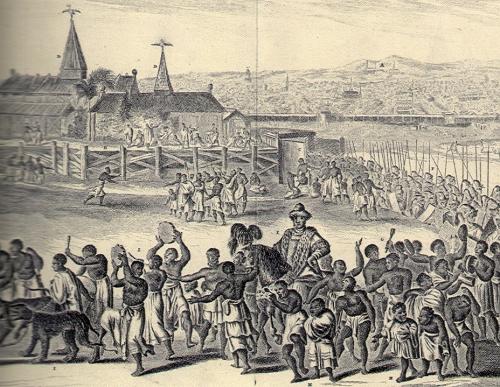
Seventeenth-century engraving illustrating a court ceremony. In the foreground is the king of Benin on horseback, surrounded by musicians, dwarfs, and attendants with tame leopards, and leading a procession of chiefs and warriors, also on horseback. The middle ground shows the royal palace, which has high turrents surmounted by large cast-brass birds with outstretched wings. In the background, separated by a wall, is the town of Benin. Presided over by the oba, or king, the city was both a major trading center and the religious and political capital of the Edo people.
From Olfert Dapper, Beschreibung von Afrika (1967: pl. opp. 486), first published in Amsterdam
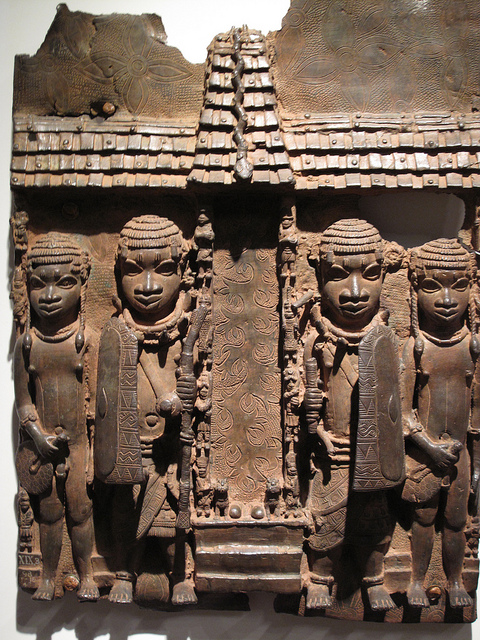
King's Palace note the shingled roof
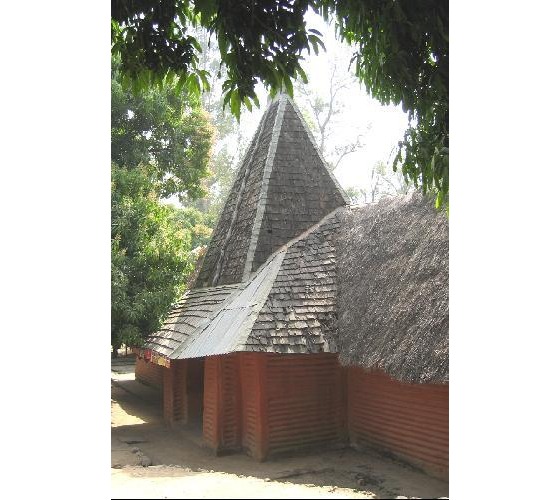
Home of one of the kings's chief
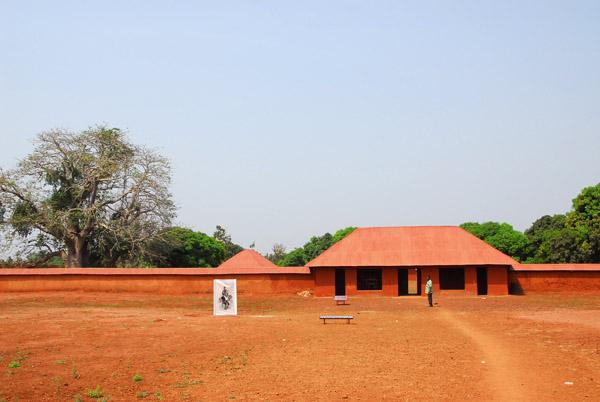
Part of the king's palace which was as large as Amsterdam a city like the forbidden city of China ordinary commoners did not have access
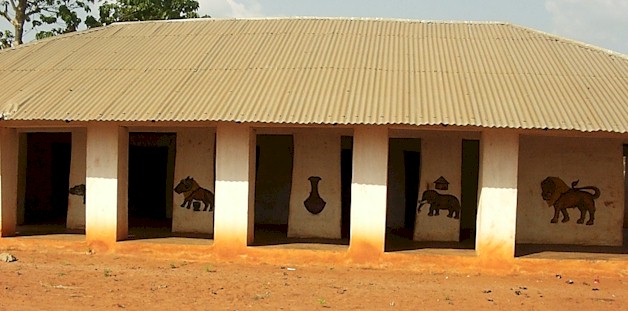

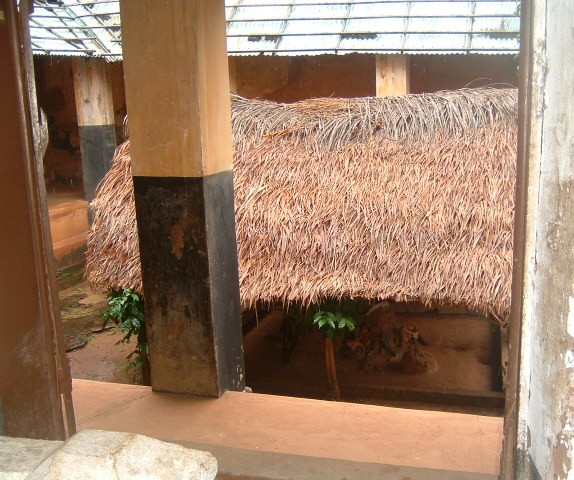
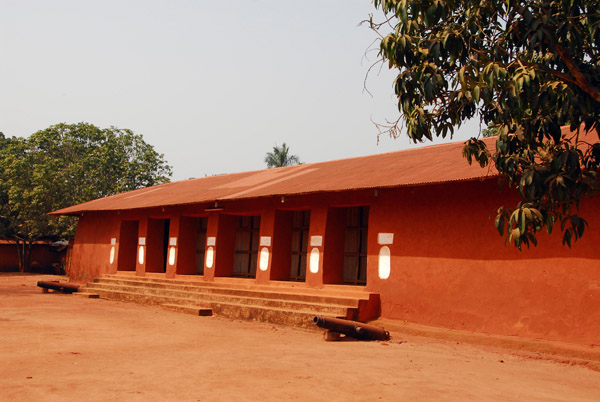
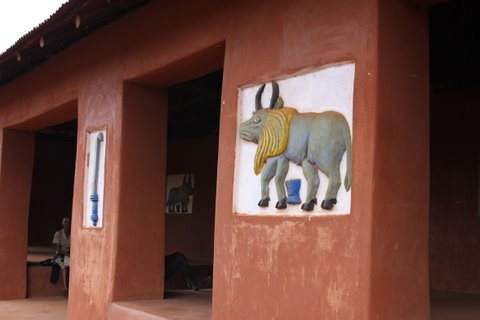
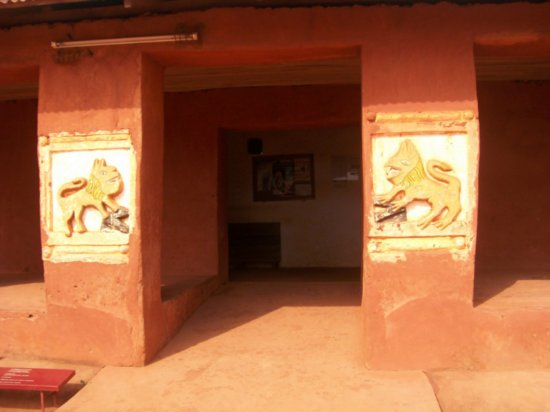
Note the embossed carvings functioned like the cartouch found in ancient Egypt aka kemet just one of themany features shared with that far-off land.
www.abovetopsecret.com...
See^here.

Voodoo shrine note many of the traditional wooden and Brass shingles have been replaced by zinc yuck!

One of the finest Bronze work of medieval Benin 13th-14th cent A.D

The Benin Empire (1440–1897) was a pre-colonial African state in what is now modern Nigeria. It should not be confused with the modern-day country called Benin, formerly called Dahomey.
The Ogiso Period
Ogiso ("Rulers of the Sky"), who may have numbered as many as thirty-one kings, ruling the kingdom of Benin between 900 - 1170 AD, which is the earliest period so far accounted for in Benin history (Plankensteine 2007).
The first ruler, according to Benin traditions, was Igodo, a prominent elder in his community (Odionwere) who exercised authority over all other elders (Edionwere). Igodo is said to have ruled all the various small communities which collectively formed the kingdom known as 'Igodomigodo', meaning 'land of Igodo' or 'town of towns'. The most prominent among the known Ogiso rulers are Igodo, Ere, Orire, Oriagba and Owodo. The kingdom began as a union of juxtaposed clusters of independent communities, each surrounded by a moat (Egharevba 1968).


Note the grid iron streets
Fortification of Benin City

The defensive fortification of Benin City, the capital, consisted of ramparts and moats, call iya, enclosing a 4000 square kilometer (2485.5 miles) of community lands. In total, the Benin wall system encompasses over 10,000 kilometres (6213.7 miles) of earth boundaries. Patrick Darling, an archaeologist, estimates that the complex was built between 800 and 1000 up to the late fifteenth century (Keys 1994: 16). Advantageously situated, the moats were duged in such a manner that earthen banks provided outer walls that complemented deep ditches. According to Graham Connah, the ditch formed an integral part of the intended barrier but was also a quarry for the material to construct the wall or bank (Keys 1994: 594). The ramparts range in size from shallow traces to the immense 20-meter-high rampart (66 feet) around Benin City (Wesler 1998: 144). The Guinness Book of World Records describes the walls of Benin City as the world's second largest man-made structure after China's Great Wall), in terms of length, and the series of earthen ramparts as the most extensive earthwork in the world.
During the second half of the 15th century, Oba Ewuare the Great ordered a moat to be dug in the heart of the city. The earthworks served as a bastion and also afforded control of access to the capital which had nine gates that were shut at night. Travel notes of European visitors also described the Benin walls (e.g. Pacheco Pereira 1956: 130-147; Dapper 1668). It was finalized around 1460, at that time being the world's largest earthwork.
Benin City

Seventeenth-century engraving illustrating a court ceremony. In the foreground is the king of Benin on horseback, surrounded by musicians, dwarfs, and attendants with tame leopards, and leading a procession of chiefs and warriors, also on horseback. The middle ground shows the royal palace, which has high turrents surmounted by large cast-brass birds with outstretched wings. In the background, separated by a wall, is the town of Benin. Presided over by the oba, or king, the city was both a major trading center and the religious and political capital of the Edo people.
From Olfert Dapper, Beschreibung von Afrika (1967: pl. opp. 486), first published in Amsterdam

King's Palace note the shingled roof

Home of one of the kings's chief

Part of the king's palace which was as large as Amsterdam a city like the forbidden city of China ordinary commoners did not have access






Note the embossed carvings functioned like the cartouch found in ancient Egypt aka kemet just one of themany features shared with that far-off land.
www.abovetopsecret.com...
See^here.

Voodoo shrine note many of the traditional wooden and Brass shingles have been replaced by zinc yuck!

One of the finest Bronze work of medieval Benin 13th-14th cent A.D
edit on 23-2-2013 by Spider879 because: (no reason given)
new topics
-
Comparing the theology of Paul and Hebrews
Religion, Faith, And Theology: 7 seconds ago -
Pentagon acknowledges secret UFO project, the Kona Blue program | Vargas Reports
Aliens and UFOs: 59 minutes ago -
Boston Dynamics say Farewell to Atlas
Science & Technology: 1 hours ago -
I hate dreaming
Rant: 1 hours ago -
Is the origin for the Eye of Horus the pineal gland?
Philosophy and Metaphysics: 3 hours ago -
Man sets himself on fire outside Donald Trump trial
Mainstream News: 3 hours ago -
Biden says little kids flip him the bird all the time.
2024 Elections: 3 hours ago -
The Democrats Take Control the House - Look what happened while you were sleeping
US Political Madness: 4 hours ago -
Sheetz facing racial discrimination lawsuit for considering criminal history in hiring
Social Issues and Civil Unrest: 4 hours ago -
In an Historic First, In N Out Burger Permanently Closes a Location
Mainstream News: 6 hours ago
top topics
-
In an Historic First, In N Out Burger Permanently Closes a Location
Mainstream News: 6 hours ago, 14 flags -
The Democrats Take Control the House - Look what happened while you were sleeping
US Political Madness: 4 hours ago, 11 flags -
Thousands Of Young Ukrainian Men Trying To Flee The Country To Avoid Conscription And The War
Other Current Events: 17 hours ago, 8 flags -
A man of the people
Medical Issues & Conspiracies: 11 hours ago, 8 flags -
Man sets himself on fire outside Donald Trump trial
Mainstream News: 3 hours ago, 7 flags -
Biden says little kids flip him the bird all the time.
2024 Elections: 3 hours ago, 6 flags -
4 plans of US elites to defeat Russia
New World Order: 13 hours ago, 4 flags -
Pentagon acknowledges secret UFO project, the Kona Blue program | Vargas Reports
Aliens and UFOs: 59 minutes ago, 4 flags -
Is the origin for the Eye of Horus the pineal gland?
Philosophy and Metaphysics: 3 hours ago, 4 flags -
Sheetz facing racial discrimination lawsuit for considering criminal history in hiring
Social Issues and Civil Unrest: 4 hours ago, 3 flags
active topics
-
Comparing the theology of Paul and Hebrews
Religion, Faith, And Theology • 0 • : DISRAELI2 -
Pentagon acknowledges secret UFO project, the Kona Blue program | Vargas Reports
Aliens and UFOs • 3 • : onestonemonkey -
12 jurors selected in Trump criminal trial
US Political Madness • 107 • : Xtrozero -
Man sets himself on fire outside Donald Trump trial
Mainstream News • 30 • : HatesFreshAir -
The Democrats Take Control the House - Look what happened while you were sleeping
US Political Madness • 36 • : DBCowboy -
The defamation of Mary Magdalene
Religion, Faith, And Theology • 14 • : DISRAELI2 -
Mood Music Part VI
Music • 3063 • : lilzazz -
Russian intelligence officer: explosions at defense factories in the USA and Wales may be sabotage
Weaponry • 176 • : BernnieJGato -
-@TH3WH17ERABB17- -Q- ---TIME TO SHOW THE WORLD--- -Part- --44--
Dissecting Disinformation • 543 • : SideEyeEverything1 -
Elites disapearing
Political Conspiracies • 33 • : 0bserver1
